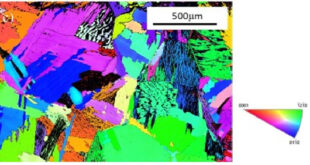Significance Statement
Centrifugal pumps are widely used to transport liquid in various fields, by which 17% of the electricity generated in the world is consumed, therefore, to optimize the performance of centrifugal pumps is very meaningful for energy conservation.
In order to improve the performance of a centrifugal pump, an optimization method is proposed by combining numerical simulation, design of experiment, surrogate models and optimization algorithm. As the key component of a centrifugal pump, impeller is improved by optimizing three main parameters, namely blade inlet incidence angle, blade wrap angle and blade outlet angle.
The surrogate models are applied to build mathematical functions between the objectives and variables. For example, the response surface model could be applied to build a function with second-order polynomial (f(x) =a×x2+b×x+c). Thus it is available to search the maximum value of the function by using optimization algorithm. The prediction accuracy of the function can be analyzed with the R-square. Besides, the importance order of the influence of variables on the performance can be analyzed with the response surface model.
To validate the feasibility of the optimization method proposed, it was applied to improve the performance of a low-specific-speed centrifugal pump. The efficiency at the design point and overload condition was regarded as the optimization objectives. Two surrogate models that are response surface model and Kriging model are compared. The hydraulic efficiency of the centrifugal pump were increased by 4.18% and 0.62% under two operating points respectively and the power was reduced. The optimization method can reduce the optimization time and obtain an accurate combination of variables to improve the performance of centrifugal pumps. Besides, the optimization process can also be applied to improve the performance of other kinds of pumps.

Journal Reference
Journal of Mechanical Science and Technology, 2016, Volume 30, Issue 2, pp 567-574.
Wenjie Wang1, Ji Pei 1, Shouqi Yuan1, Jinfeng Zhang1, Jianping Yuan1, Changzheng Xu2
[expand title=”Show Affiliations”]- National Research Center of Pumps, Jiangsu University, Zhenjiang, 212013, China
- Yixing Unite Machinery Co. Ltd., Wuxi, 214205, China
Abstract
An optimization process for impellers was carried out based on numerical simulation, Latin hypercube sampling (LHS), surrogate model and Genetic algorithm (GA) to improve the efficiency of residual heat removal pump. The commercial software ANSYS CFX 14.5 was utilized to solve the Reynolds-averaged Navier-Stokes equations by using the Shear stress transport turbulence model. The impeller blade parameters, which contain the blade inlet incidence angle Δβ, blade wrap angleφ, and blade outlet angle β 2, were designed by random sample points according to the LHS method. The efficiency predicted under the design flow rate was selected as the objective function. The best combination of parameters was obtained by calculating the surrogate model with the GA. Meanwhile, the prediction accuracy of three surrogate models, namely, Response surface model (RSM), Kriging model, and Radial basis neural network (RBNN), were compared. Results showed that the calculated findings agree with the experimental performance results of the original pump. The RSF model predicted the highest efficiency, while the RBNN had the highest prediction accuracy. Compared with the simulated efficiency of the original pump, the optimization increased efficiency by 8.34% under the design point. Finally, the internal flow fields were analyzed to understand the mechanism of efficiency improvement. The optimization process, including the comparison of the surrogate models, can provide reference for the optimization design of other pumps.
Go To Journal of Mechanical Science and Technology
 Advances in Engineering Advances in Engineering features breaking research judged by Advances in Engineering advisory team to be of key importance in the Engineering field. Papers are selected from over 10,000 published each week from most peer reviewed journals.
Advances in Engineering Advances in Engineering features breaking research judged by Advances in Engineering advisory team to be of key importance in the Engineering field. Papers are selected from over 10,000 published each week from most peer reviewed journals.




